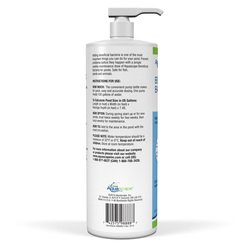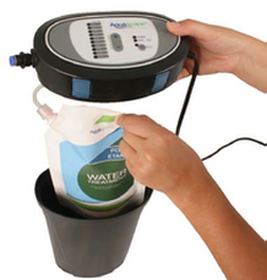Spring Pond Maintenance|Tips For A Clear Pond|Rochester|New York|NYNow that spring is here, you’re probably noticing some changes in your pond – your fish are coming back to life and you may even be able to see some plant growth. Some changes that are taking place, however, aren’t so desirable, like that excess algae growth that you’ve noticing. Understanding the transition that your pond makes from winter into spring and summer is essential in maintaining a healthy pond ecosystem. You may have just spent your weekend cleaning your pond – or having your pond contractor do it for you. A couple of days … weeks pass, and you notice an incredible growth of string algae. “Not again,” you screech to yourself. “I thought my pond was clean!” Well, my friend, cleanliness does not necessarily mean algae-free, especially in the cool water of the early spring. Some simple, important steps can be the difference between a balanced pond with minimal maintenance and a pond that requires unnecessary maintenance. Although bacteria and plants don’t start growing properly until water temperature reaches 55°F, there are still some simple steps you can take to maintain a crystal clear, trouble-free pond. 1) The Plants Since plants directly compete with algae for nutrients and sunlight, they are probably the most important addition to your pond. Add a wide variety of plants to your pond. This not only creates a natural look, but also will help reduce the algae in different areas of your pond. Place your floating plants, such as water lettuce, in your BioFalls Filter. These floating plants reproduce rapidly, using up enormous amounts of nutrients. A stick placed across the front of the BioFalls Filter will prevent the plants from flowing over the front of the waterfalls and into the pond. Plenty of bog and marginal plants should be added to the pond. Plants such ascattails and iris take up large quantities of nutrients. They are hardy and will be back each spring to help keep your pond balanced. Cover the water surface of the pond by planting waterlilies. Lily pads float on the top of the pond, shading the water. 2) The Bacteria
Automatic Dosing System
3) The Fish Fish are also sensitive to water temperature, and as it warms up, you will see more activity, and be tempted to feed them. You’ve missed your fish all winter, but until the water temperature is consistently at 55° F, don’t feed them. Their metabolism is still in slow motion and they are unable to digest the food properly. If you do feed them and food cannot be digested, this can result in food starting to decay in the body of the fish causing fish to become sick and possibly resulting in their death. When you do start feeding them, begin with small amounts of a quality fish food formulated for colder water temperature, such as Aquascape Premium Coldwater Fish Food Pellets for all pond fish. 4) Patience Please.....It takes time for the bacteria to establish itself and colonize to the point of being a benefit to your pond. In general, a new pond can take anywhere from two to six weeks for the bacteria population to reach this point. We Recommend Fully Draining & Cleaning Your Koi Fish Pond At Least Once Every Year Acorn Ponds & Waterfalls Can Help You, Call Us 585-442-6373Other Helpful Pond Info Links:
0 Comments
Leave a Reply. |
AuthorLandscape Designer / Pond Contractor, Tom Warmerdam has been designing, installing & maintaining koi ponds, water features, patios, landscape lighting & creating outdoor living area paradises all around Rochester, New York (NY) for over 30 years. His company Acorn Ponds & Waterfalls was awarded by Aquascape Inc. as one of the top 100 in North America in 2014. He has been attending conferences at Aquascape headquarters every year since 2004 in Chicago, Ill to maintain his Certification(Certified Aquascape Contractor) status. Archives
March 2024
Categories
All
|
Maintenance Services |
Installation Services |
General Info |
Connect with Ratings Websites |
(4.9 ★★★★★ RATING: 79 REVIEWS On Google!) |
PLEASE REFER TO OUR PRIVACY POLICY AND TERMS OF USE SERVICE FOR DETAILS
all rights reserved, copyright Acorn Ponds & Waterfalls of Rochester, New York (NY) 2024
Site Map |
Website Design & SEO By Thomas A. Warmerdam
POWERED BY: |





 RSS Feed
RSS Feed









